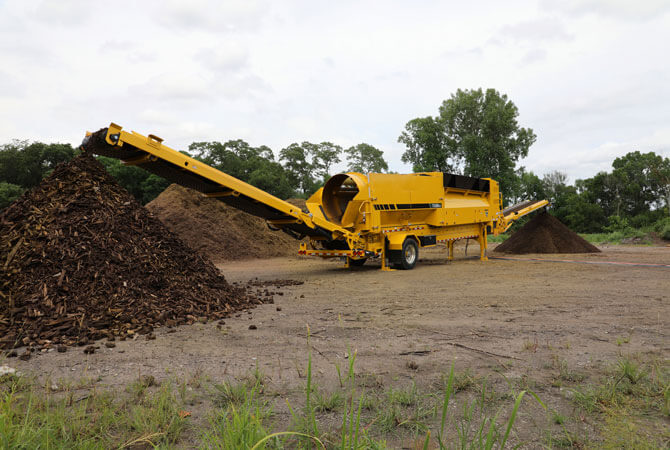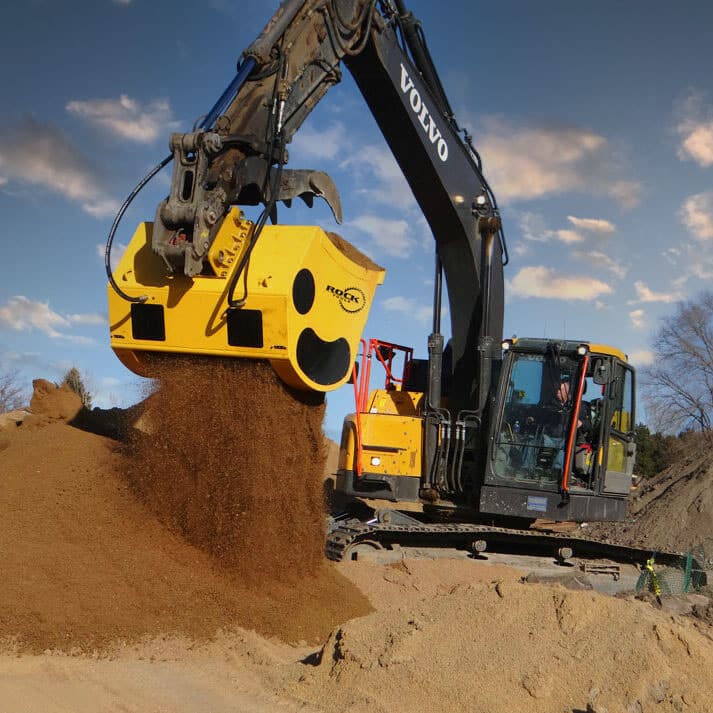Quality Meets Affordability: Your Ultimate Overview to Picking a Dirt Screen for Sale
Quality Meets Affordability: Your Ultimate Overview to Picking a Dirt Screen for Sale
Blog Article
Enhance Material Recuperation With State-Of-The-Art Dust Screens for Recycling Facilities
In today's globe, where environmental sustainability is a pressing problem, reusing centers play a critical duty in decreasing waste and saving resources. Nonetheless, maximizing product healing can be an intricate procedure, frequently hindered by the presence of dirt and debris in the recycling stream. This is where advanced dirt screens enter into play, offering an appealing solution to enhance product healing rates. By effectively dividing unwanted contaminants, these sophisticated screens hold the prospective to revolutionize reusing facilities' procedures. Just how precisely do dirt screens boost material recovery? What are the key functions that make them modern? And just how can recycling centers implement them properly? In this conversation, we will check out the answers to these concerns and explore real-life situation researches that highlight the successful integration of dirt displays in reusing facilities. Prepare to discover the transformative power of advanced dirt displays and their influence on boosting material recuperation.
The Significance of Dust Screens in Recycling Facilities
Dirt displays play a vital duty in reusing centers by successfully separating dust and other impurities from recyclable materials. These displays, also referred to as trommel screens, are developed to efficiently get rid of unwanted particles and make certain that useful and just clean materials are processed additionally.
The primary function of dust displays is to divide bigger pieces of dust, rocks, and various other non-recyclable things from the stream of materials. By doing so, they prevent these impurities from getting in the recycling procedure and possibly harmful devices or jeopardizing the quality of the final product.
In addition, dust screens aid to enhance the total performance of recycling operations. By eliminating dirt and other pollutants early at the same time, the displays decrease the quantity of manual work called for to arrange and cleanse the materials in the future. This not only conserves time however additionally raises and decreases expenses efficiency.
Additionally, making use of dirt displays adds to ecological sustainability. By ensuring that unpolluted and only tidy materials are refined, reusing facilities can produce higher-quality recycled items. This, in turn, encourages using recycled materials in different industries, reducing the need for virgin resources and minimizing the environmental impact of resource removal and manufacturing processes.
How Dirt Screens Improve Material Recuperation
Making use of dirt screens in reusing centers dramatically enhances the process of material recovery. These screens play an essential function in separating dirt, debris, and various other undesirable products from the recyclable stream, leading to enhanced efficiency and greater quality output.
One of the major ways in which dust screens enhance material recuperation is by eliminating pollutants that can prevent the recycling procedure. Dust, rocks, and other non-recyclable things can create damages to devices, lower the efficiency of subsequent sorting processes, and pollute the final recycled products. By efficiently screening out these contaminants, dirt displays help guarantee that the recyclable products stay pure and of premium quality.
Furthermore, dust screens allow recycling facilities to recoup a better amount of valuable products. By removing dirt and particles, the screens enable a much more precise sorting procedure, boosting the recovery price of recyclable materials. This means that better resources can be redeemed and recycled, lowering the demand for virgin materials and lessening the environmental impact related to their removal and manufacturing.
Along with improving material recuperation, dust displays also add to the total effectiveness of recycling facilities. By stopping tools damage and reducing downtime triggered by obstructions and blockages, these displays assist keep a continuous and smooth recycling process. This boosted effectiveness converts right into expense savings and enables higher throughput, ultimately boosting the success and sustainability of recycling operations.
Key Functions of State-of-the-Art Dust Screens
To further enhance the performance and effectiveness of material recuperation in reusing facilities, modern dust screens are outfitted with crucial features that maximize the separation process and ensure the finest output (dirt screen for sale). These functions include advanced testing technology, personalized setups, and robust building
One key feature of advanced dirt screens is their advanced testing innovation. These displays are designed with precision-engineered mesh or perforated plates that successfully different dust and particles from the recyclable products. The dimension and spacing of the openings in the screens can be tailored to fit different kinds of products, enabling efficient separation and optimum recovery rates.
An additional crucial function of these dust screens is their adjustable settings. Recycling centers can change the speed, angle, and amplitude of the displays to enhance the splitting up procedure. This flexibility enables drivers to adjust the screens according to the certain requirements of the materials being refined, resulting in enhanced precision and greater recuperation prices.
In addition, modern dust screens are constructed with robust construction to withstand the severe problems find out of reusing centers. They are made from sturdy materials such as stainless-steel or high-strength alloys, making certain long life and minimal downtime because of upkeep or repair services. Furthermore, these screens are made with simple access for cleaning and upkeep, reducing and assisting in reliable procedures downtime.
Actions to Implementing Dust Screens in Recycling Facilities
What are the required actions for including dust displays right into recycling facilities? Implementing dust displays in recycling facilities entails an organized method to guarantee reliable installation and operation. The adhering to are the required actions to successfully incorporate dirt screens:
Evaluation: Conduct an extensive assessment of the facility's requirements and demands to establish the suitable dirt display specifications. Think about elements such as material kind, volume, and wanted splitting up performance.

Installment: Prepare the center for the setup of the dust displays. This might involve retrofitting existing tools or producing area for brand-new installations. Comply with supplier guidelines and make sure correct positioning and combination with the reusing procedure.
Examining and Calibration: Once the dust displays are set up, conduct thorough testing to ensure correct functioning. dirt screen for sale. Adjust the system to accomplish desired separation performance and reduce worldly loss
Training and Upkeep: Train personnel on operating and keeping the dirt screen system. Establish a routine maintenance schedule, including cleansing and assessment, to guarantee optimum efficiency and longevity.

Study: Successful Material Healing With Dust Screens
Integrating dirt displays into recycling facilities has shown to be an effective method for attaining efficient product healing, as shown by several case studies. These instance researches highlight the positive influence of dust screens on the overall recycling process.
By executing dust screens, the center was able to substantially decrease the quantity of contamination in their recyclable materials. The intro of dust screens additionally helped to tear and decrease the wear on sorting equipment, reducing upkeep expenses and downtime.
One more study showcases a country recycling facility that fought with excessive dust and debris in their inbound waste stream. link By installing dirt displays, the center was able to get rid of a big portion of the unwanted products, leading to cleaner recyclables and improved performance in the sorting procedure. This resulted in greater product recuperation prices and lowered waste sent to the garbage dump.
These instance research studies demonstrate that integrating dirt displays into recycling facilities can have a significant favorable influence on material healing. By successfully removing dirt, debris, and various other impurities, recycling facilities can enhance their total recycling prices, reduce land fill waste, and maximize the worth of recovered products.
Final Thought
Finally, making use of modern dirt screens in reusing facilities is that site essential for boosting material healing. These displays properly remove dirt and debris, enabling the reliable splitting up and healing of beneficial materials. By applying dirt displays, reusing centers can significantly boost their recycling processes and add to an extra sustainable future.
One of the main ways in which dirt displays boost material recovery is by removing pollutants that can prevent the recycling procedure. By successfully screening out these contaminants, dust displays aid ensure that the recyclable products stay pure and of high quality.
In addition, dust displays make it possible for recycling facilities to recoup a better quantity of important materials.In addition to enhancing product recuperation, dirt displays additionally add to the overall effectiveness of recycling centers.In conclusion, the use of cutting edge dirt displays in recycling facilities is essential for boosting material recuperation.
Report this page